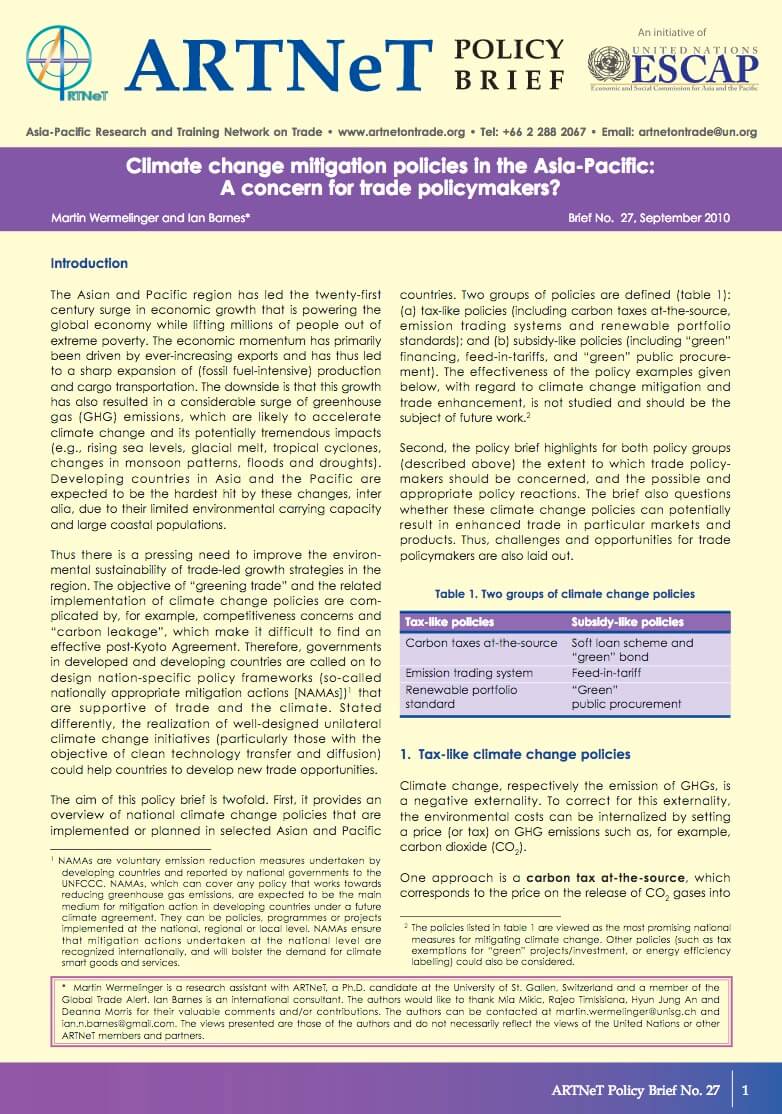Climate change mitigation policies in the Asia-Pacific: A concern for trade policymakers?

The Asian and Pacific region has led the twenty-first century surge in economic growth that is powering the global economy while lifting millions of people out of extreme poverty. The economic momentum has primarily been driven by ever-increasing exports and has thus led to a sharp expansion of (fossil fuel-intensive) production and cargo transportation. The downside is that this growth has also resulted in a considerable surge of greenhouse gas (GHG) emissions, which are likely to accelerate climate change and its potentially tremendous impacts (e.g., rising sea levels, glacial melt, tropical cyclones, changes in monsoon patterns, floods and droughts). Developing countries in Asia and the Pacific are expected to be the hardest hit by these changes, inter alia, due to their limited environmental carrying capacity and large coastal populations.
Thus there is a pressing need to improve the environmental sustainability of trade-led growth strategies in the region. The objective of “greening trade” and the related implementation of climate change policies are com- plicated by, for example, competitiveness concerns and “carbon leakage”, which make it difficult to find an effective post-Kyoto Agreement. Therefore, governments in developed and developing countries are called on to design nation-specific policy frameworks (so-called nationally appropriate mitigation actions [NAMAs]) that are supportive of trade and the climate. Stated differently, the realization of well-designed unilateral climate change initiatives (particularly those with the objective of clean technology transfer and diffusion) could help countries to develop new trade opportunities.
